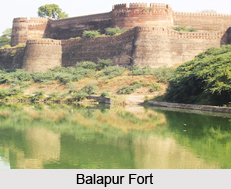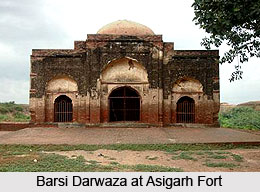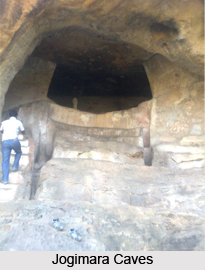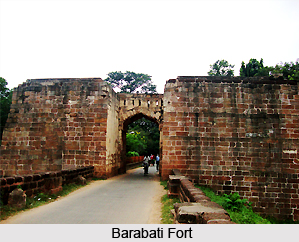 Monuments in Cuttack are the major attractions for people from all corners of India as well as various other parts of the world. Previously the capital of Orissa, Cuttack is situated at a distance of about thirty two kilometres to the north of the new capital city of Orissa, Bhubaneshwar. Cuttack was founded by Nripati in 920, who belonged to the Lion dynasty. The city has long been of military and commercial significance. Since its foundation Cuttack has witnessed several socio-political and cultural changes. The monuments constructed at different points of time mirror the deft craftsmanship that was prevalent in this city. Besides this, they also narrate the tale of the then contemporary societies.
Monuments in Cuttack are the major attractions for people from all corners of India as well as various other parts of the world. Previously the capital of Orissa, Cuttack is situated at a distance of about thirty two kilometres to the north of the new capital city of Orissa, Bhubaneshwar. Cuttack was founded by Nripati in 920, who belonged to the Lion dynasty. The city has long been of military and commercial significance. Since its foundation Cuttack has witnessed several socio-political and cultural changes. The monuments constructed at different points of time mirror the deft craftsmanship that was prevalent in this city. Besides this, they also narrate the tale of the then contemporary societies.
The stone revetment on the Kathjuri River dates back to the 11th century. The major features of the Barabati Fort are in ruins, with the exception of the fine arched Lion gateway which can still be seen there. The exact date of the original construction of the fort is uncertain, and it is assumed that the fort was constructed in the 14th century, but in 1750 a large round bastion and gateway were erected by the Muslim governor. Only fragments of the citadel survive, mainly, the gateway and a mosque devoted to Fateh Khan Rahim. The area of the fortress is now a mass of pits and mounds. Very few survive to convey the original grandeur. The fort was taken from the Bhonsla Raja of Nagpur by the British in the year 1803.
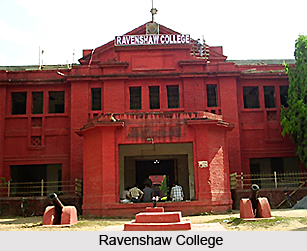 The Kadam-i-Rasui is a complex of three mosques, with each crowned by a fine dome. One can also find there a Naubhat Khana or Music Gallery and a shrine with a massive dome, which is regarded as the largest present in the state of Orissa. The footprints of the Prophet Muhammad are engraved on a circular stone within the building, which is venerated by both Muslims and Hindus. To the north of Cuttack, along the Taldanda Canal, is a complex of weirs. The Mahanadi Weir is over 1,950 meters in length and was constructed between the year 1863 and 1870 with the aim of preventing flood water to enter the Cuttack city.
The Kadam-i-Rasui is a complex of three mosques, with each crowned by a fine dome. One can also find there a Naubhat Khana or Music Gallery and a shrine with a massive dome, which is regarded as the largest present in the state of Orissa. The footprints of the Prophet Muhammad are engraved on a circular stone within the building, which is venerated by both Muslims and Hindus. To the north of Cuttack, along the Taldanda Canal, is a complex of weirs. The Mahanadi Weir is over 1,950 meters in length and was constructed between the year 1863 and 1870 with the aim of preventing flood water to enter the Cuttack city.
Ravenshaw College, the School of Engineering and the Museum are noteworthy historical buildings in Cuttack. Apart from these some of the famous temples in this city include the temple of Cuttack Chandi. This Cuttack temple is dedicated to the Goddess Chandi who is regarded as the supreme deity of the city and it is one of the major places of Hindu pilgrimages in India. It is situated to the south of Barabati Fort and devotees visit this temple every day to worship the Goddess. Another major temple in Cuttack city is the Paramhansnath temple. It is counted among the notable religious monument in Orissa. Devoted to Lord Shiva, the temple is located in the vicinity of the city of Cuttack. The Paramhansnath Temple is well-known for its large water hole, known as `Ananta Garva`. On auspicious or holy occasions, water is let out from the hole causing flood in the garbhagriha. Dhawaleshwar is a temple situated at about thirty seven kilometers from the central parts of Cuttack city. This temple is dedicated to the Lord Shiva.
Barabati Fort belongs to the medieval age and it is situated exactly eight kilometres from the middle of Cuttack city, atop a delta which has been created by the Mahanadi River to the north and the Kathajodi River (Mahanadi`s distributary) to the south and is at 14.26 meters above sea level.
The eight Shiva Pithas located in Choudwar, the 11th century temple of Dhabaleswar, the remains of Amaravati-Kataka Fort situated in Chhatia, Mahavinayak Shrine in Chandikhol, the beautiful Buddhist center of Naraj, shrines in the twin village of Niali-Madhava, the car festival and the Baladeva Temple in Kendrapara district and the temples of Jajpur are among the major historical places located in close proximity to the Cuttack city which can be visited while on a tour to Cuttack.


